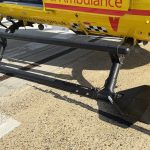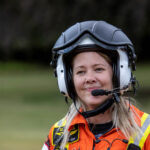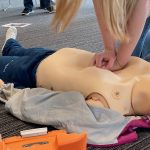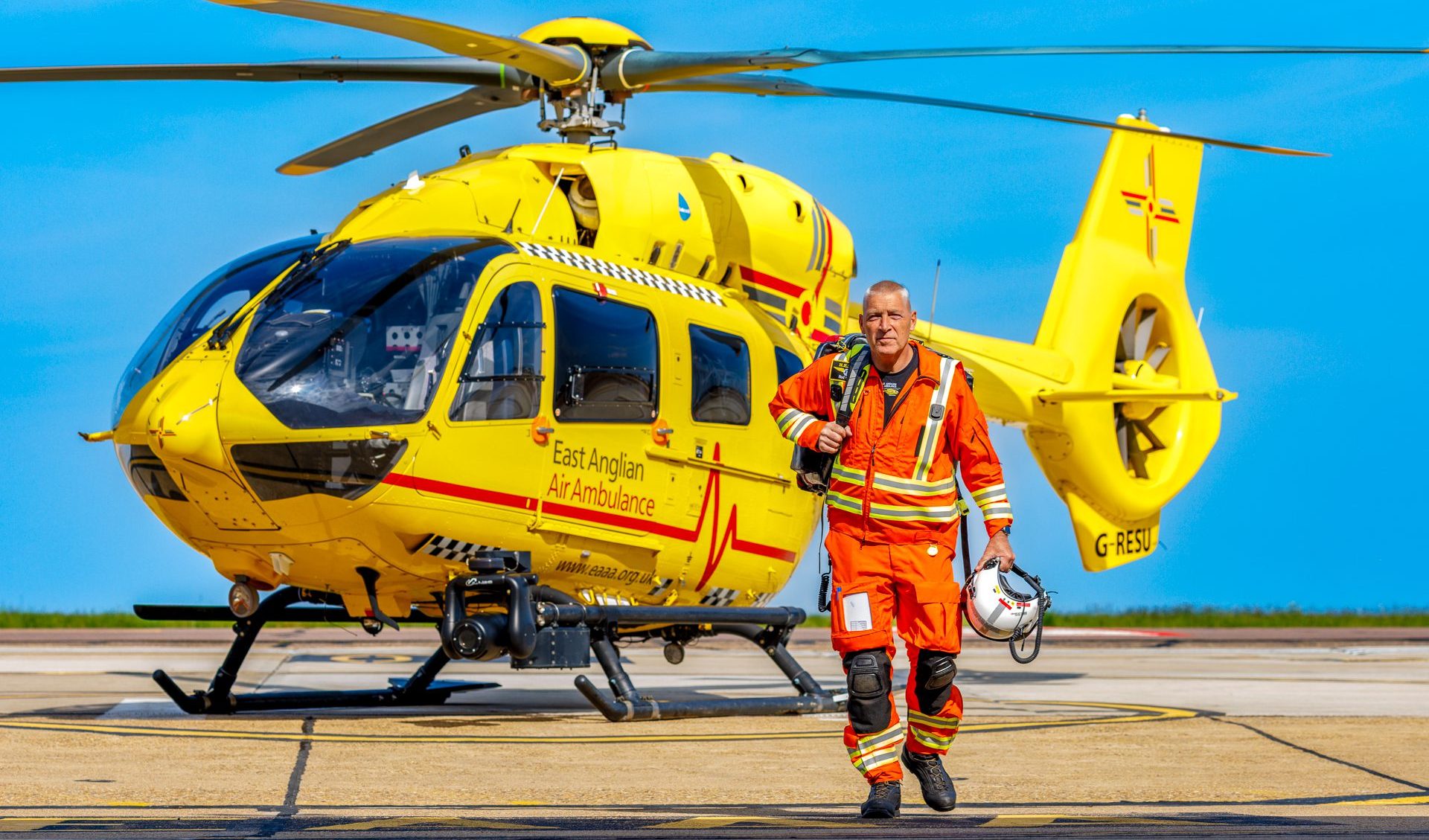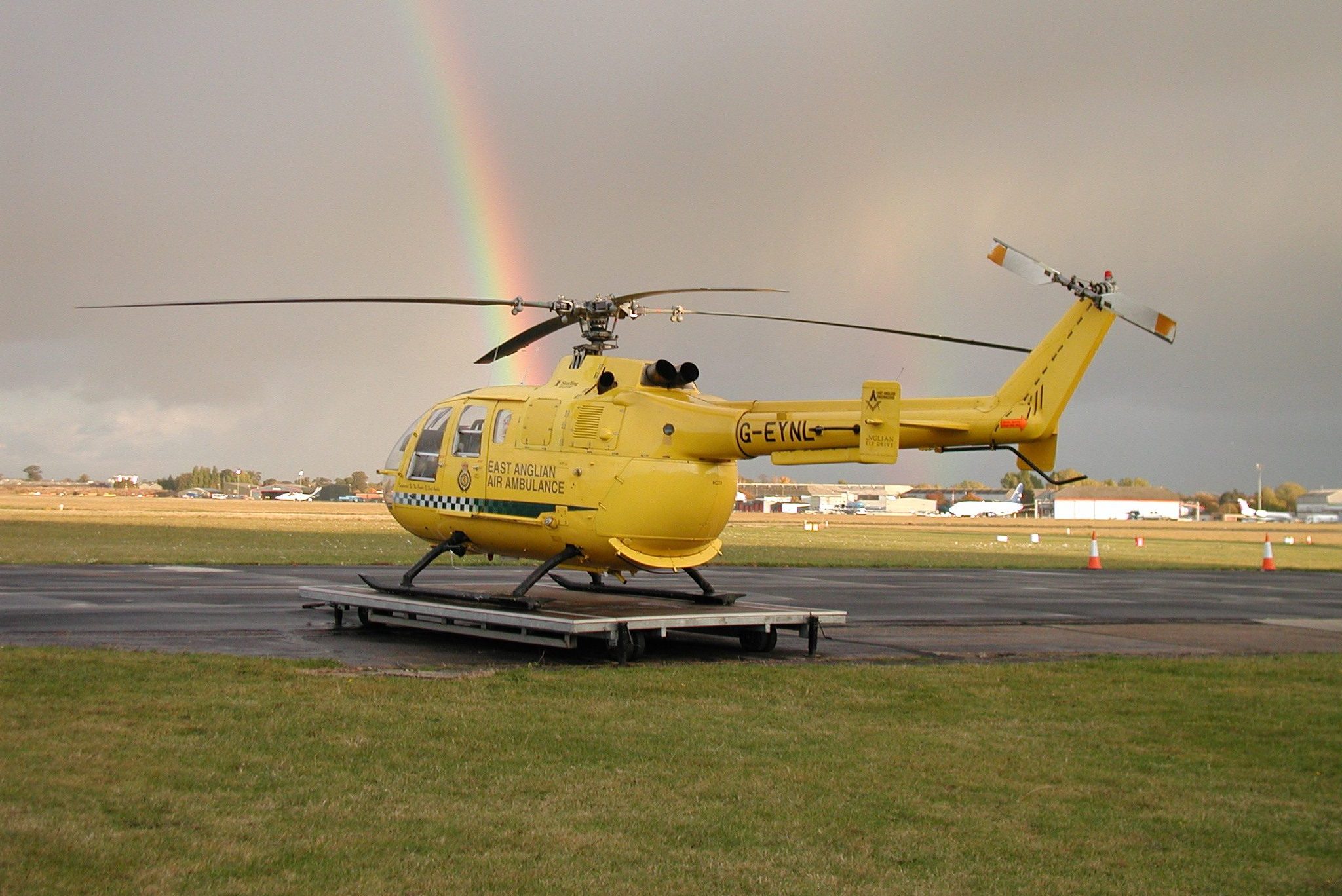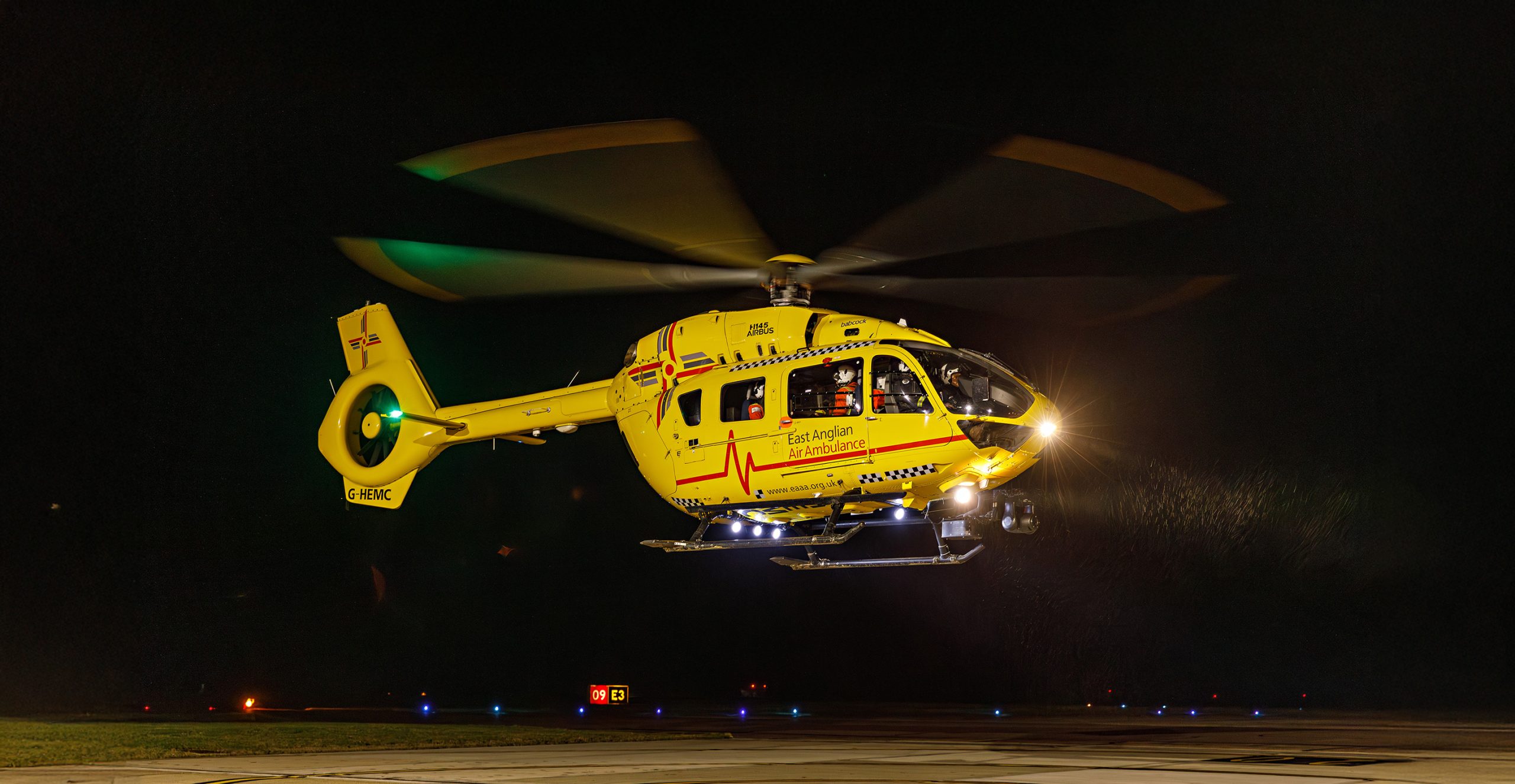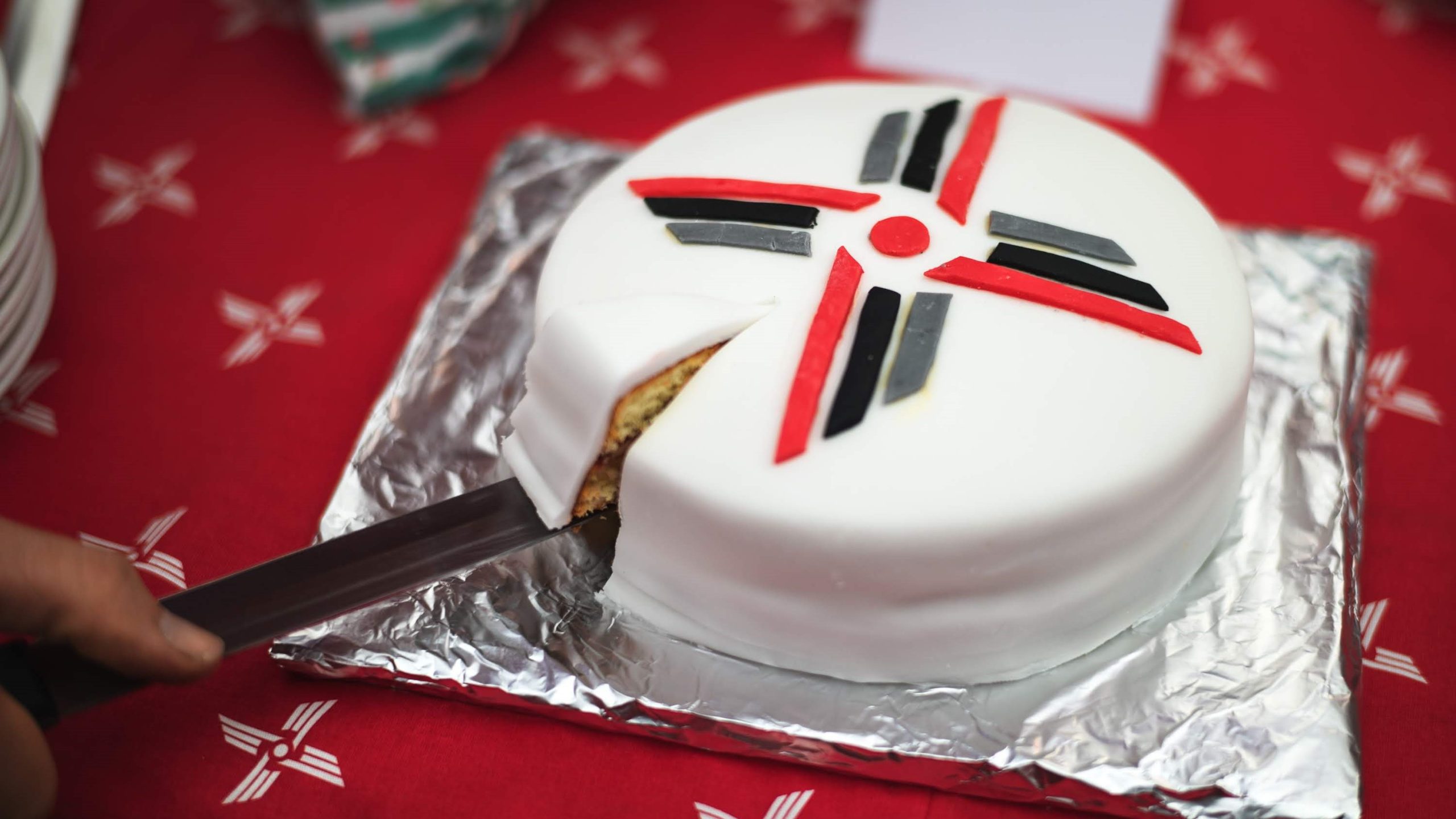6 Aug 2025
World Helicopter Day 2025
EAAA’s helicopters, G-RESU and G-HEMC, are more than just aircraft; they are members of the family and highlight the life-saving support from people in our region. Before G-RESU and G-HEMC, the current Anglia One (Norwich) and Anglia Two (Cambridge) helicopters, EAAA has been served by other aircraft over the years – each of which has played a significant part in bringing life-saving care to some of the region’s most seriously injured and unwell people. This World Helicopter Day (August 17), we’re reflecting on some of the aircraft which have served our communities during EAAA’s 25 years.
The charity now provides a 24/7 life-saving service, by air and road, to communities in and around Norfolk, Suffolk, Cambridgeshire and Bedfordshire – an area of over 5,000 square miles – but it started from smaller foundations, which provided a platform from which the charity could develop. One of EAAA’s founders and pilot, Captain Gerry Hermer, whose dedication to the whole aviation industry has spanned more than five decades, reflects on where it all began.
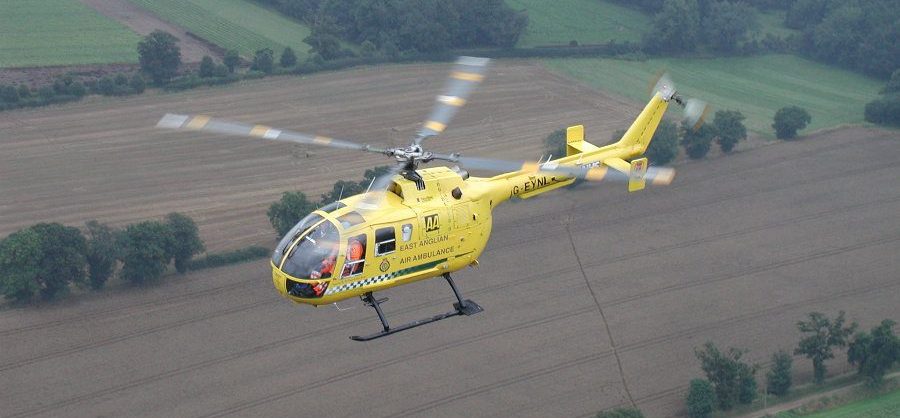
Humble beginnings
“In those early days the EAAA helicopter, which was a Bolkow BO105, flew once a week with two paramedics on board, but it became operational seven days a week – during the daytime – in July 2001,” Captain Hermer explains.
The helicopter didn’t always fly out of Norwich. While the base has always been on the Norwich Airport site, there was also a standby base at Red Lodge Go Karting track. The helicopter, with the call sign Anglia One, would fly from Norwich to Red Lodge, and occasionally Honington, most shifts so the crew were positioned more centrally in the region.
“A considerable financial injection from the Automobile Association (AA) enabled the service to increase to seven days a week. This is why the EAAA helicopters are yellow,” Captain Hermer, who retired from his role in 2017, adds.
By November 2006, a Bolkow BK117 was ordered from Germany. This more modern helicopter provided a great increase in cabin space for the medical crew and patient.
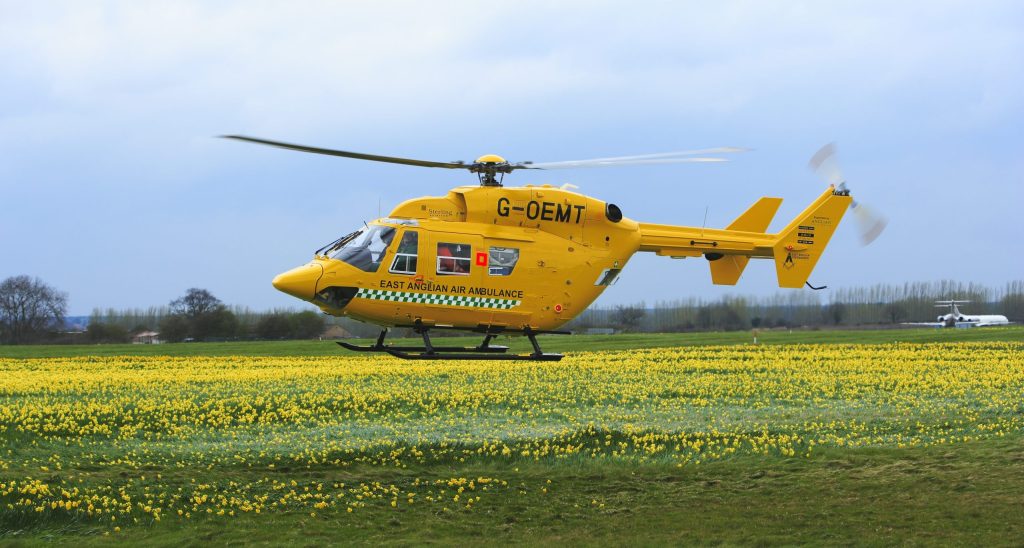
The service grows
In 2007, following an appeal to extend EAAA’s service to Bedfordshire and Cambridgeshire, a second BK117 initially became operational five days a week, with the call sign ‘Anglia Two. By the end of that year, both Anglia One (Norwich) and Anglia Two (Cambridge) were operational seven days a week.
In 2011, we changed aircraft providers/operators from Sterling Aviation to Bond Air Services to start flying the Eurocopter EC135, which was operational mainly from Norwich. This was followed in October 2012 with G-HEMN; a fully night-capable helicopter which was delivered to Cambridge to become the new Anglia Two.
A landmark moment followed in May 2013 when EAAA became the first air ambulance service in the country to fly to unknown and unlit sites in the hours of darkness. While not yet flying 24/7, the service had more hours of operation, meaning the charity’s doctors and critical care paramedics could treat more patients in urgent need.
“One of the great things as an air ambulance pilot was locating the incident, finding a safe landing site as close as possible to the incident without any delay, and getting the clinicians there safely. When a patient is being given the best possible care in the fastest possible time, you know you’ve achieved something,” Captain Hermer says.

H145s and 24/7 flying
In April 2015 and now with Babcock International Group (Babcock) as the charity’s aviation provider, EAAA received the UK’s first HEMS H145 helicopter. From 2015 – 2017, the then Duke of Cambridge, William Wales, flew shifts as a Helicopter Emergency Medical Service pilot with EAAA.
It was in September 2020 that EAAA announced the helicopters had flown almost 30,000 missions to some of the region’s most seriously ill and injured people – something that would not have been possible without the kind donations and support from people across the region. A further milestone for the charity was reached on 30 June 2021 when EAAA starting flying 24/7, becoming the first air ambulance in the East of England to do so.
G-HEMC, one of our current helicopters, marked ten years of service in 2025. When it came into operation in April 2015, it was the UK’s first H145 air ambulance and greatly improved our operational capabilities.
Speaking in April 2025 to mark G-HEMC’s decade of service Babcock pilot Captain Andy, who flew G-HEMC’s first tasking, said, “The H145 is the ideal platform for HEMS. The aircraft is powerful, with reliable engines combined with responsive handling. The aircraft size and dimensions mean most landing sites are available, and the avionics suite ensures pilot workload is managed effectively through a four-axis autopilot and modern satellite navigation system. Fuel load and consumption allow us to carry, on average, over two hours’ worth of fuel. This means we can cover a huge area before we need to refuel.”
We took delivery of G-RESU in February 2016. Both aircraft have been with the charity ever since and received five-blade upgrades in 2022 (G-RESU) and 2023 (G-HEMC). This generated more lift, reduced vibrations and improved handling and stability, providing improved comfort for EAAA’s patients and crew as they operate 24/7.

As the years have moved on, so has EAAA. Far from being simply a fast transfer to hospital, both aircraft transport the charity’s specialist doctors, critical care paramedics and pilots, along with the advanced skills, equipment and medicine – normally only found in a specialist emergency department – directly to the patient’s side in the fastest time possible. The equipment carried by EAAA’s helicopters and critical care cars enables enhanced care at the incident scene – when the patient needs it most – such as blood transfusions, advanced pain relief, sedation and anaesthesia, and surgical interventions. This, combined with quick onward transfer to the most appropriate hospital, gives every patient treated by EAAA the best possible chance of surviving and recovering from a life- threatening medical or trauma emergency.
